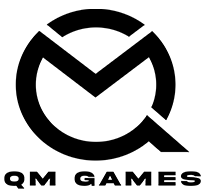AMD FreeSync is a hardware solution for screen tearing issues, and the tech comes bundled into some of the best gaming monitors available. Features like Vsync can help, but FreeSync compatible screens can smooth out stuttering and boost fps without breaking a sweat. Both AMD and Nvidia are starting to cooperate in terms of compatibility, making it easier than ever to mix and match.
How to Use Freesync with Nvidia Graphics Card?
Yes, it is possible to use an Nvidia graphics card with any display that supports Freesync, and you’ll get an image like on any other screen.
In the bottom tier of Nvidia and AMD’s VRR technologies, you’ll find improved versions of an adaptive refresh, branded G-Sync Compatible, and FreeSync. They use the GPU’s hardware to improve performance, but there are hardware technologies that are common to both Nvidia and AMD GPUs, which means you can use both by using a supported monitor, provided the manufacturer’s graphics card driver allows you to enable it for the other cards. Unlike FreeSync, the G-Sync Compatible shows that Nvidia has tested the monitor for an “approved” level of effect.
Nvidia has announced to support FreeSync monitors with GeForce GPUs. A few years ago, Nvidia only supported its own G-Sync monitors. AMD also supported only the open FreeSync standard. In 2019, Nvidia started the G-Sync Compatible initiative, also known as “Nvidia FreeSync.” However, there are limitations.
You have to connect the GPU to the monitor through the display port only, which means you can’t use HDMI or DVI ports to connect to your FreeSync monitor. Lastly, you’ll need to install the latest Nvidia drivers for your GPU. G-Sync Compatible monitors are the ones with Adaptive sync or FreeSync which Nvidia has certified for use with their GPUs.
Aside from being a good, feature-rich monitor in general, a FreeSync monitor should have a wide variable refresh rate, also known as a FreeSync window. FreeSync will only be active in this case. For example, Imagine your monitor has a 60–120Hz refresh rate window and if your game runs at a lower or higher fps than this range, you will experience tearing with G-Sync enabled. You will have to turn down the game graphics settings to play it properly. The wider the refresh rate or FPS window, the less you’ll have to sacrifice on the quality.






